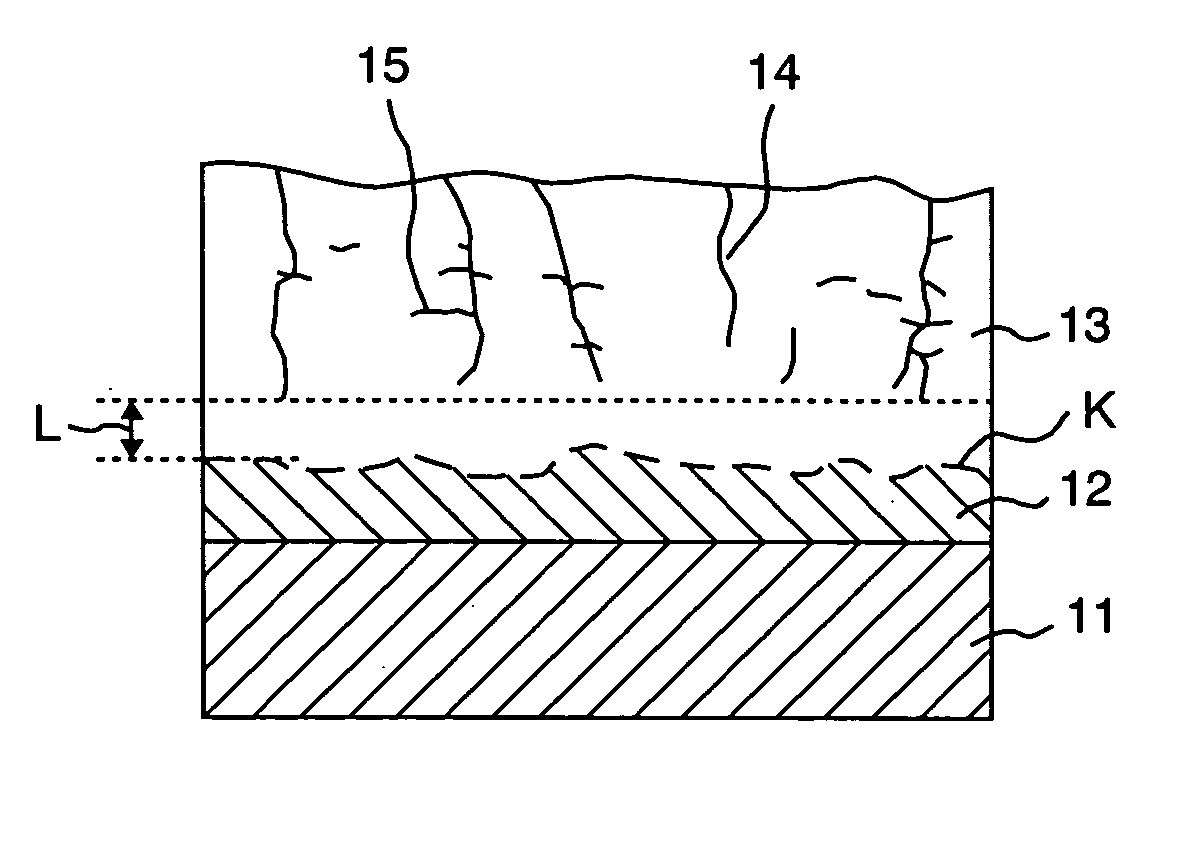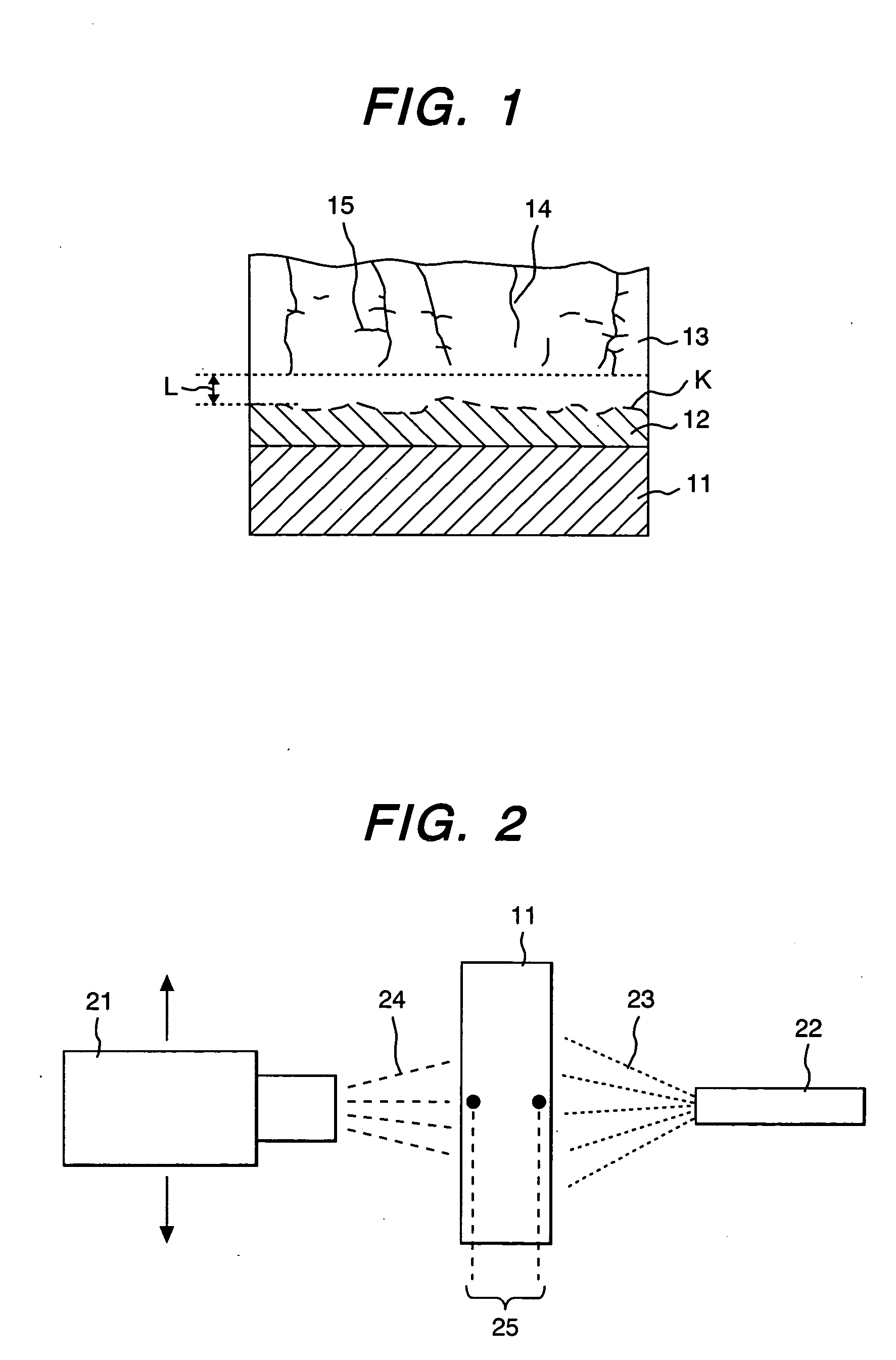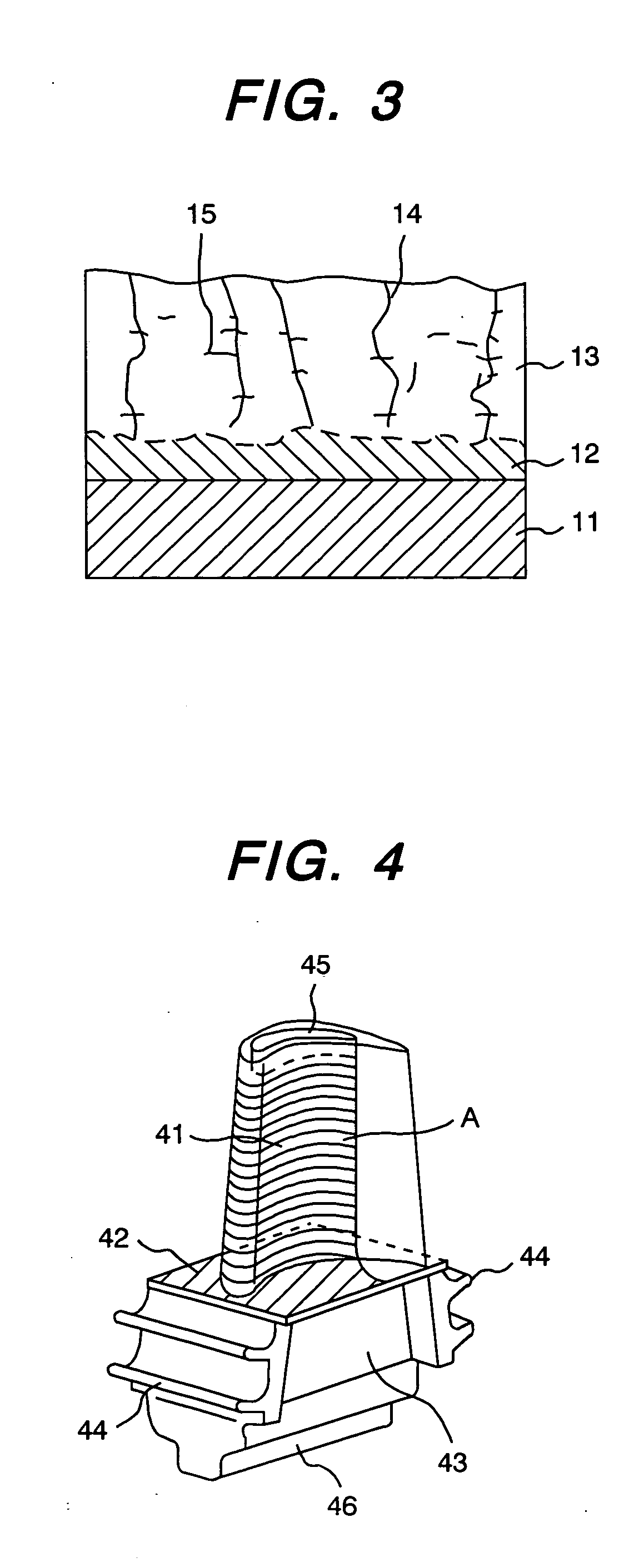Heat resistant article having thermal barrier coatinging
a technology of thermal barrier coating and heat resistance article, which is applied in the field of heat resistance articles with thermal barrier coating, can solve the problems of easy damage, limited heat resistance temperature, and peeling off of ceramic coating, and achieve the effect of long operation tim
- Summary
- Abstract
- Description
- Claims
- Application Information
AI Technical Summary
Benefits of technology
Problems solved by technology
Method used
Image
Examples
embodiment 1
(Embodiment 1)
[0039] A Ni base super alloy (Rene′−80; Ni—14% Cr—4% Mo—3% Al—5% Ti—0.5% Co) of a disc form having a diameter of 25 mm and a thickness of 5 mm was used as a test piece. Powder of MCrAlY alloy (Co—32% Al—21% Cr—8% Al—0.5% Y) was applied to the surface of the test piece by a low pressure plasma spray method to form a metal bond coating.
[0040] The thickness of the metal bond coating was about 100 μm. Then, a thermal barrier coating of the present invention having a thickness of about 500 μm was formed on the bond coating by an atmospheric plasma spray method. The spray conditions were: ceramic powder of ZrO2—8 weight % Y2O3 was introduced into a plasma jet using a mixed gas of N2—18% H2 (a plasma output: about 100 kW). The spray distance was 90 mm, and the traverse speed of a spray gun was 30 m / min. A thickness per one pass (a thickness of the barrier coat formed by one spray pass) was 50 μm. As shown in FIG. 2, compressed air was blown to the backside face of the test p...
embodiment 2
(Embodiment 2)
[0059] The present inventors prepared a ceramic coating gas turbine blade based on the test results using the fundamental test pieces of the embodiment 1. In the following, this will be explained.
[0060] The perspective view of the gas turbine structure is shown in FIG. 4. In this drawing, the gas turbine blade is made of Ni base heat resisting super alloy (Rene′−80), which is used as the first stage blade, for example. The blade structure comprises the blade 41, a platform section 42, a shank portion 43, a seal fin 44 and a tip pocket 45. The structure is fitted by means of a dovetail 45 to a rotor disc. The blade has a blade length of 100 mm and a length from the platform to the end is 120 mm. The blade has a cooling hollow (not shown), which is formed from the dovetail 46 through the blade 41 to cool it with air or steam. Although the ceramic coated blade is most suitable for the first stage blade, it can be used for second stage blade and others. The thermal barrie...
PUM
| Property | Measurement | Unit |
|---|---|---|
| thickness | aaaaa | aaaaa |
| porosity | aaaaa | aaaaa |
| thickness | aaaaa | aaaaa |
Abstract
Description
Claims
Application Information
 Login to View More
Login to View More - R&D
- Intellectual Property
- Life Sciences
- Materials
- Tech Scout
- Unparalleled Data Quality
- Higher Quality Content
- 60% Fewer Hallucinations
Browse by: Latest US Patents, China's latest patents, Technical Efficacy Thesaurus, Application Domain, Technology Topic, Popular Technical Reports.
© 2025 PatSnap. All rights reserved.Legal|Privacy policy|Modern Slavery Act Transparency Statement|Sitemap|About US| Contact US: help@patsnap.com



